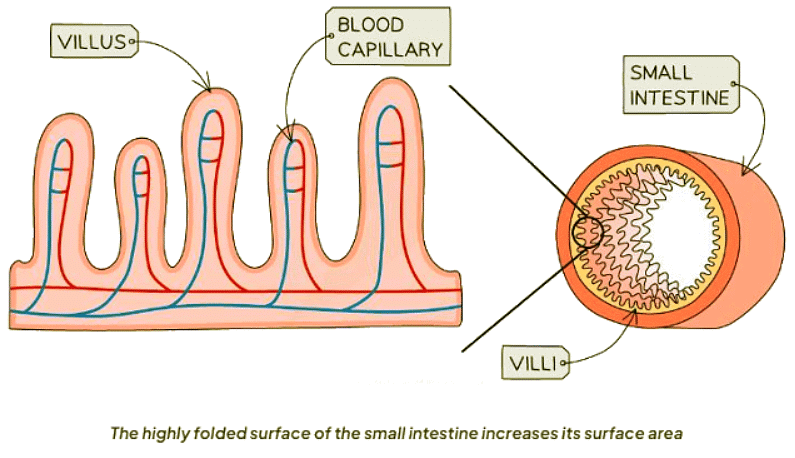Class 10 Exam > Class 10 Notes > Biology for GCSE/IGCSE > Factors that Influence Diffusion
Factors that Influence Diffusion | Biology for GCSE/IGCSE - Class 10 PDF Download
Factors that Influence Diffusion
Surface area to volume ratio
- The size of a cell or structure impacts its surface area to volume ratio. A larger cell has a smaller ratio, which in turn slows down the movement of substances across its surface.
- Cells specialized for diffusion often exhibit increased surface area adaptations. For instance, root hair cells in plants, responsible for water and mineral ion absorption, and cells lining the ileum in animals, involved in absorbing digested products, showcase enhanced surface areas to facilitate efficient diffusion processes.


Distance
- Transport speed is enhanced when molecules have shorter distances to travel.
- For instance, blood capillaries and alveoli possess single-cell thick walls to optimize diffusion rates.
Temperature
- Elevated temperatures accelerate molecular movement by increasing energy levels.
- This leads to heightened collisions with cell membranes, thereby expediting transport.
Concentration Gradient
- Greater disparities in concentration across a membrane result in faster movement.
- Higher concentrations prompt more frequent collisions with the membrane, facilitating swifter transport.
Question for Factors that Influence DiffusionTry yourself: How does the size of a cell or structure affect diffusion?View Solution
The document Factors that Influence Diffusion | Biology for GCSE/IGCSE - Class 10 is a part of the Class 10 Course Biology for GCSE/IGCSE.
All you need of Class 10 at this link: Class 10
|
110 videos|210 docs|33 tests
|
FAQs on Factors that Influence Diffusion - Biology for GCSE/IGCSE - Class 10
| 1. What are some factors that influence diffusion? |  |
Ans. Factors that influence diffusion include concentration gradient, temperature, surface area, distance, and the size of the molecules involved.
| 2. How do cell adaptations aid in diffusion? |  |
Ans. Cell adaptations such as having a large surface area-to-volume ratio, thin cell membrane, and specialized transport proteins can facilitate the process of diffusion.
| 3. How does the concentration gradient affect diffusion? |  |
Ans. The concentration gradient, which is the difference in concentration between two areas, directly influences the rate of diffusion. A steeper concentration gradient results in faster diffusion.
| 4. Why is temperature a factor that influences diffusion? |  |
Ans. Temperature affects diffusion by increasing the kinetic energy of molecules, leading to faster movement and collisions between molecules, which in turn speeds up the diffusion process.
| 5. Can the size of molecules affect diffusion? |  |
Ans. Yes, the size of molecules can impact diffusion. Smaller molecules tend to diffuse more rapidly than larger ones due to their ability to move through spaces more easily.
Related Searches















